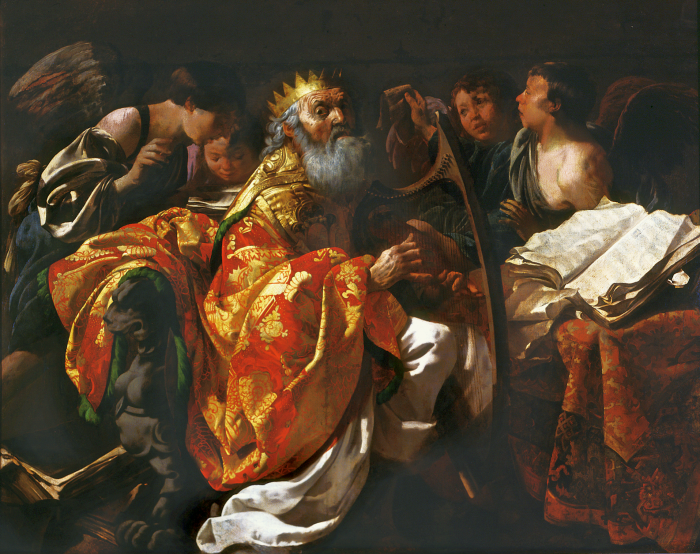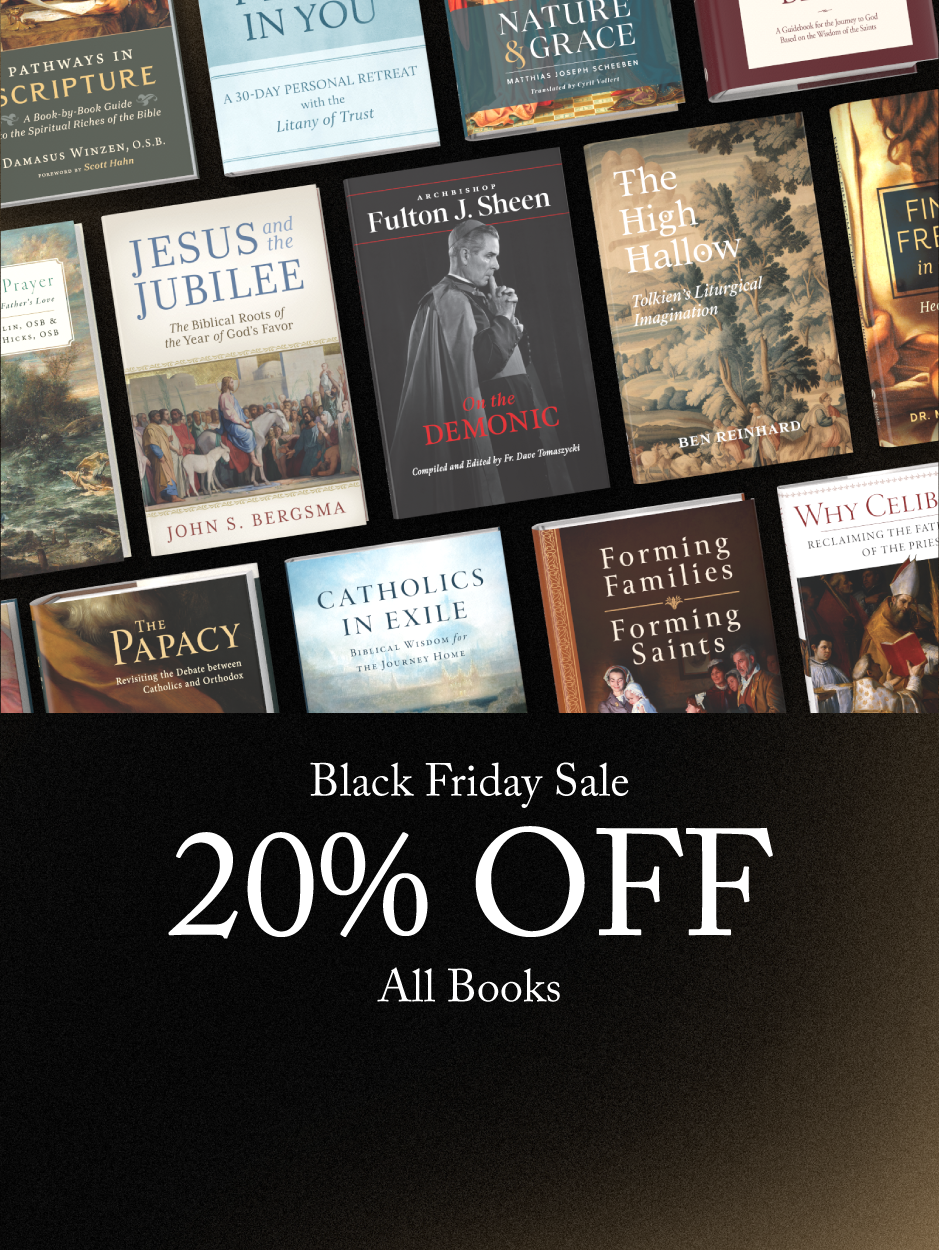‘He Must Reign’: The Kingdom of God in Scripture
Lesson Six: ‘The Key of David’: Church and Kingdom in the New Testament

Lesson Objectives
- To understand the characteristics and identity of the kingdom of God as it is portrayed in the New Testament epistles and the Book of Revelation.
- To see how the Church is identified with the kingdom in the New Testament.
- To understand how the Church, as it is portrayed in the New Testament, bears the characteristics of the Davidic kingdom.
III. The Key of David
A. The Light to the Nations
The Church is the fulfillment of the kingdom promised to Israel. This is again stressed in Revelation’s final pages.
John sees a vision of the new Jerusalem, the new capital of the new kingdom. The city gates are inscribed with the names of the twelve tribes of Israel, and the foundation stones are inscribed with the names of the twelve apostles (see Revelation 21:9-13).
The depiction of the kingdom as a temple is similar to the depiction of the Church as a spiritual temple (see 1 Peter 2:5).
Israel was commissioned to be a light to the nations (see Isaiah 42:6; 49:6). The new Israel, the kingdom of the Church, fulfills that commission. As John sees it, the new Jerusalem is illuminated by the glory of God and enlightens the entire world, its light brighter than the sun and the moon. "The nations will walk by its light" and kings of the earth stream toward the light, bringing the wealth of nations to pay tribute (see Revelation 21:22-27).
John here is evoking the prophecies of Isaiah concerning the new exodus and the restoration of the Davidic kingdom. Isaiah had prophecied that God would one day be an "everlasting light" brighter than the sun and moon (see Isaiah 60:19) and that nations would come to the light bearing their wealth (see Isaiah 60:3,5).
Isaiah foretold that the gates of the kingdom would be open to people of all nations - a promise that John likewise sees delivered in the kingdom of the Church (compare Isaiah 60:11; Revelation 21:25-26).
Isaiah also foretold that authority ("the key") over the Davidic kingdom would be turned over to a new royal minister (see Isaiah 22:22).
Christ applied this prophecy to the apostle Peter, and interpreted the "keys to the kingdom" to mean authority in what He called "my Church" (see Matthew 16:18-19).
We see the same identification of kingdom and Church in Revelation, which also offers an interpretation of Isaiah’s prophecy concerning the keys. Jesus is described as the "offspring of David" (see Revelation 22:16) and as "the holy one . . . who holds the key of David" (seeRevelation 3:7).
B. Davidic Kingdom Restored
We are now in the position to see how the Church, as it is portrayed in the New Testament, bears the characteristics of the Davidic kingdom, as we identified them in Lesson One.
• First, the kingdom of the Church is founded on a divine covenant (see 1 Corinthians 11:25).
• The "king" is the son of David, and the Son of God (see Romans 1:3-4).
· The king is God’s "anointed" (see 1 John 2:20).
· The reign of God’s anointed king is to be eternal (see 1 Timothy 6:16).
· At the center of the kingdom is the spiritual Jerusalem or Zion (see Galatians 4:26).
· Worship in the kingdom is centered on the temple of Christ’s body, which replaces the temple of Jerusalem (see John 2:19-21; Revelation 21:22).
· The kingdom is international, drawing worshippers from Israel and from all the nations (see Revelation 7:1-12).
· Through the kingdom, the nations of the earth are instructed in the divine wisdom of the son of David (see Ephesians 3:10; Colossians 1:28; James 3:17).
· The kingdom is administered by a royal steward (see John 21:15-19) and various officers (see 1 Timothy 3:3-13), and includes a prominent role for the Queen Mother (see Revelation 12:1-6).
· Finally, the worship of the kingdom consists in the offering of sacrifice, especially the sacrifice of thanksgiving, the Eucharist (see Romans 12:1; 1 Peter 2:5).
C. The Kingdom Come
The kingdom is a present reality for the New Testament writers. It is something that has come into the world with Christ (see Revelation 11:15; 12:10). It is an experience and relationship that that believers "share" in (see Revelation 1:9).
But the kingdom is at the same time something of a work in progress. Paul says that he is working for the kingom of God (see Colossians 4:11). And he foresees a final day - "the end" - when Christ will "hand over the kingdom to His God and Father" (see 1 Corinthians 15:24-50).
At that time, Paul says, Christ will have destroyed every sovereignty, authority, and power, and will have conquered the final enemy, death itself.
Revelation also looks forward to a day when "the mysterious plan of God shall be fulfilled" (seeRevelation 10:7). On this day, the kingdom of the world will belong to God and His anointed, a clear reference to Old Testament hopes for a messianic kingdom (see Revelation 11:15; 12:10; Daniel 2;Psalm 2).
Until that day, the New Testament sees the life of the kingdom, the life of the Church, as one of liturgy and anticipation - of worshipping God with a "sacrifice of praise" in union with Christ, who, through His blood consecrates believers as priests of His new covenant (see Hebrews 13:13-15).
We see this most clearly at the conclusion of Hebrews (see Hebrews 12:18-29), which characterizes the kingdom as both already come and not yet completely here. Believers "are receiving" the kingdom as a divine gift. It is something they now possess, but not yet fully.
This is a passage that is remarkable for the wealth of Old Testament imagery that it brings together. It seems to describe, in evocative and symbolic terms, the celebration of the Eucharist.
Believers are described coming to a heavenly Jerusalem to celebrate in a "festal gathering" as an "assembly of the first-born" (see vs. 22-23; compare Hebrews 2:12). The word translated "assembly" is the Greek word ekklesia, the word for "church." The word translated "festal gathering" means religious or liturgical worship (see Isaiah 66:10)
So, we have the Church on earth worshipping in the new Jerusalem, along with the angels and Jesus, the firstborn from the dead and "the mediator of a new covenant." The worship of this Church is a sacrifice of thanksgiving (see Hebrews 12:28) for the "unshakeable kingdom" that believers are in the process of "receiving" (v. 27).
Other Lessons
- Lesson One: A Throne Established Forever
- To begin to appreciate the significance of God’s covenant with David for understanding the content and meaning of the New Testament.
- To understand the biblical idea of the monarchy and the Old Testament background for the Davidic covenant.
- To understand the basic outlines of the promises made to David and the shape of the Davidic kingdom under both David and Solomon.
- Lesson Two: Looking for the ‘New David’
- To understand the basic outline of Israel’s history in the centuries between the collapse of the Davidic kingdom and the beginning of the New Testament era.
- To appreciate how the collapse and disappearance of the Davidic Kingdom shaped Israel’s hopes and beliefs in the five centuries before Christ.
- To understand how God’s covenant promises were interpreted by Israel’s prophets and how those prophecies were understood in the last centuries before Christ.
- Lesson Three: The Son of David in Matthew’s Gospel
- To understand the symbolism Matthew uses to convey the truth that Jesus Christ is the perfect Son of David.
- To see how the baptism of Jesus corresponds to the anointing of the Davidic kings.
- To understand how Matthew sees Jesus’ kingdom as the fulfillment of the promises in the prophets.
- Lesson Four: The Throne of David, His Father
- To see how Luke emphasizes Jesus’ lineage as Son of David in the infancy narrative.
- To see how Jesus appears in public as the Son of David throughout Luke’s Gospel.
- To understand how, at the climax of Luke’s Gospel, Jesus takes his place as heir to the kingdom of David.
- Lesson Five: The Spread of the Kingdom in Acts
- To understand how Jesus’ parting words to His disciples form a map of the ideal Davidic kingdom.
- To see how the structure of the Acts of the Apostles follows that map.
- To see how Luke paints the nascent Church as the Davidic kingdom perfectly restored.

